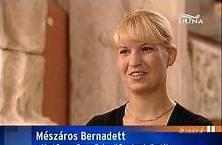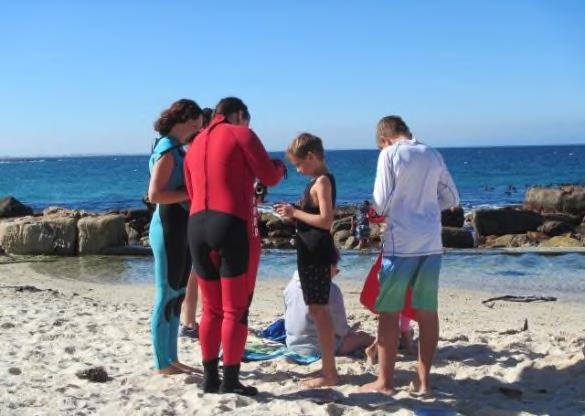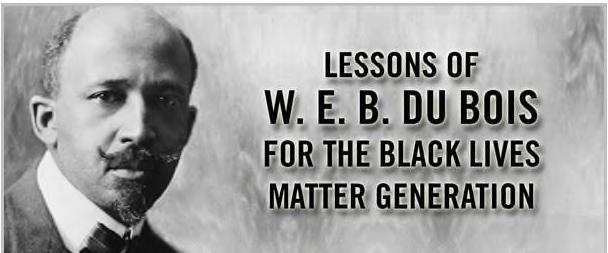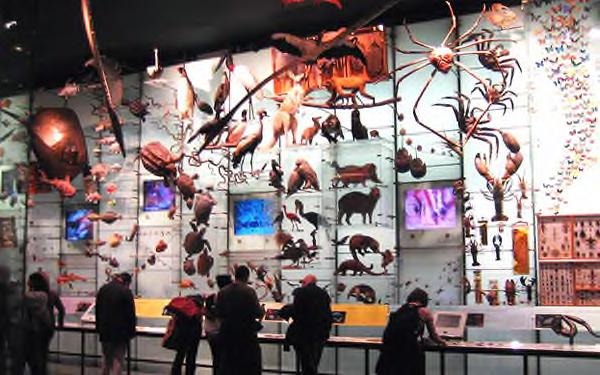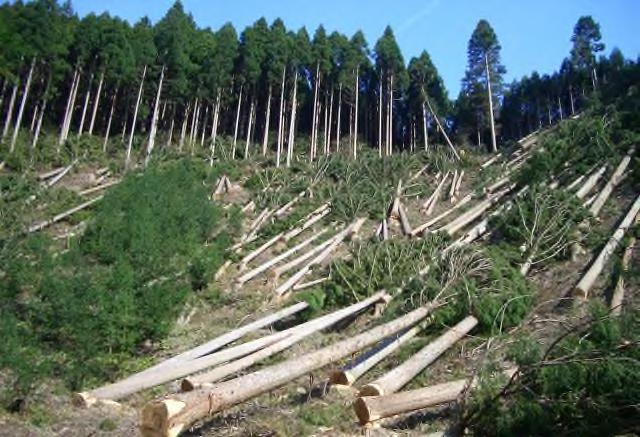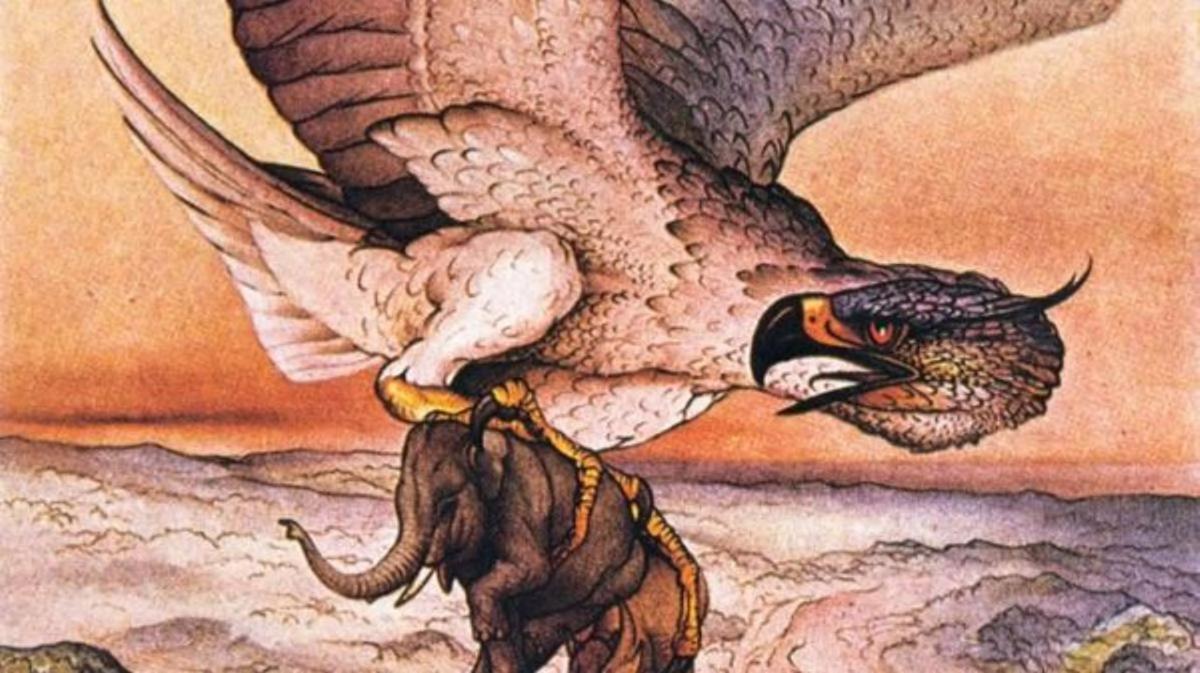
23 minute read
Some thoughts on the demonstration of monuments. Bernadett Mészáros
InterpNews
Some thoughts on the demonstration of monuments.
Advertisement

Bernadett Mészáros Huncastle Conference, Sümeg,
Introduction
This presentation raises a few dilemmas about the demonstration of archaeological sites, ruin monuments and monument buildings. My approach is arbitrary, since it is expressed through the eyes of an economist specialising in tourism marketing, and it is also based on personal experience. The purpose of this study is not the evaluation of all the relevant professional literature. However, there are two articles from the American authors: Tilden (1957) and Back–Cable (1998) that have influenced and enhanced the illustration of case studies. This article is also meant to provoke critical thinking, in a sense that it defines monuments as tourism products. Therefore, the aim of this study is to draw attention to the fact that it is not enough to know, understand and preserve our past for the sake of a few professional enthusiasts, we also must be able to promote it to a broader audience, both in the physical and in the intellectual sense. In order to further inspire critical thinking, the article wishes to demonstrate some aspects of the tools of marketing. For instance, monumental heritage could also be a touristic attraction, or a significant element of the city`s image. Besides this, it could also be a museum which is open twenty-four hours a day which could serve as a meeting point for people, like a sort of “cultural plaza”. Furthermore, it could also be the scene of education, the space of creativity and creation, or it could play a role as a powerful tool in the competition amongst cities. However, monumental heritage is part of our commonly shared past, which could only fulfil its purpose if we are able to fill it with life.
What makes an “old” building alive and functioning, what gives it a part in our common history? The answer seems simple: by using it. Tourism is a kind of utilisation; however, several standard professional conditions must be met before turning a monument into a tourism product. Therefore: a monument must be - exhibitable - visitable - accompanied by services - interesting for a wider audience - valuable on the market - and last but not least, its permanent status should be guaranteed.1 _______________________
1 Participation in a conference in the framework of the EFOP-3.6.2-16-2017-00017 project called “Sustainable, intelligent and inclusive regional and city models” 2 Based on the characteristics of marketable services by Kotler P. 2012, and the paper of L. Stephen - J. Smith, 1994 .
In this respect, the process of transforming built heritage into a product is the same as the constitution of any other service. The difference between the two elements lies in their special relationship to space. Man also plays a crucial role in both the formation and in the operation of the tourism product. For instance, the photograph on the next page (Figure 1) shows the winning production from Lithuania, which was awarded the Golden Lion award at the Venice Biennale this year. This particular art work is actually a “living” performance, which is acted out by real actors, and it is open to visitors from May to November. The Biennale has thousands of visitors each day, therefore, during a six-month period this fine art event attracts approximately half a million visitors. Additionally, the architecture exhibition is also visited by approximately 270,000 people. Consequently, these examples reveal a couple of real large-scale tourism businesses that perfectly meet all the basic criteria listed previously.3
Figure 1: Lithuania’s winner Golden Lion Award art creation at the 58th Venice Biennale
Source: https://www.widewalls.ch/lithuania-golden-lion-58th-venice-biennale/
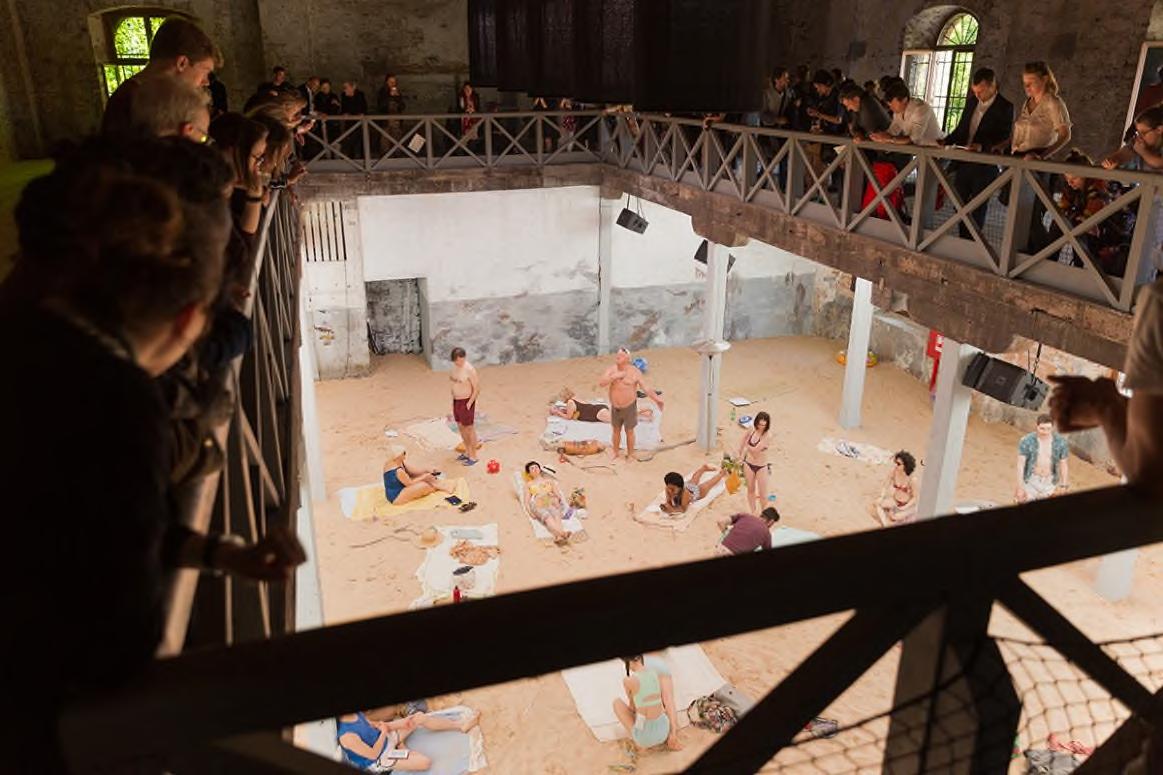
1. Tourism products from heritage values
At the turn of the twentieth century, Alois Riegl, an Austrian art historian, described the differences between the past and the present values of the buildings. Moreover, he also compared the values of antiquity (“in Schönheit sterben lassen”, i.e. “let it die virtuously”) to the values of an intentionally and purposefully created memory, that continuously “longs for” a renewal, which provides the only means that can secure its survival (Riegl 1903). When we look at the physical procedures of the presentation of monuments, their original condition takes dominant position. Also, the interpretation and understanding of the latter will determine the demonstration itself and its further possibilities. This is the “frontier” where the restoration work, which interprets the perception of the spectacle and creates spatial experience, ends. Besides, it is here also, where the interpretation begins, where the leadership, the visitors` routes and the functions for the physical services are established. ______________
3 The city of Venice as a cultural and heritage site (a world heritage site since 1987), and the Biennale as a cultural attraction motivate the visit of millions and thousands of thousand, respectively, year after year. The fine art biennale had more than 475,000 thousand registered visitors in May-November 2013, and 440,000 in 2011, 18% more than in 2009 when it was 2,850 visitors a day. In Venice, more than 4 million guest arrivals, and guest nights in excess of 9.77 million were registered. The tendency is the increase in the numbers year after year. http://www.labiennale.org/en/biennale/history/vb4.html?back=true, http://www.comune.venezia.it/flex/cm/pages/ServeBLOB.php/L/IT/IDPagina/74151
However, a harmonious initiation is only only possible by the joint thinking and by the collaboration of the collaboration of the different professionals. An inevitable conflict conflict, however, may emerge as a result of the fact that some aspects the fact that some aspects of the process co-exist: the monument building, the interpretation of monument building, the interpretation of the heritage, credibility, credibility, and also a form of demonstration that is attractive and of demonstration that is attractive and includes the practical functions. Changing consumer habits, and the new and continuously emerging challenges of the technical environment the new and continuously emerging challenges of the technical environment raise difficulties for the professionals who are als who are engaged with heritage protection. However, this slowly . However, this slowly makes them realise the importance of the understanding and understanding and application of marketing knowledge as knowledge as perspective, and as a leadership function. It also helps them realise the significance of comprehending . It also helps them realise the significance of comprehending and implementing a method that supports the popularisation method that supports the popularisation and the attraction of visitors. In the figure below, the author In the figure below, the author recommends the `golden middle`-solution solution between the two extremes, since she does not regard does not regard marketing as an omnipotent tool. Since marketing does not does not create the value, it only provides assistance for t assistance for the consumers in the selection of the relevant value, which may also which may also create a basis for the tourism product. tourism product. Unmistakably, this also consists of a consumer- (and understanding (and understanding-) oriented inclination as well, which s as well, which suggests that “laic” visitors and even professionals are actually tourists essionals are actually tourists in disguise, who wish to expand their their own knowledge and perspective in a leisurely way.
tourism product
attraction
value
Suitable for satisfying the demand
Suitable for triggering travel desire
Suitable for raising interests, motivational base.
Source: edited by the author. A tourism product will only be durable and distinguishable from its durable and distinguishable from its competitors, if its foundation, the core of the attraction is a value in itself. When talking about heritage attractions, hen talking about heritage attractions, we mean the immanent value the immanent value attribute of the monument. The attribute means an element of phenomenon manifesting, carrying, expressing attribute of the monument. The attribute means an element of phenomenon manifesting, carrying, expressing the outstanding universal values, such as: form, design, materials, us , such as: form, design, materials, usage and functions, and functions, traditions, management methods, environment, language management methods, environment, language and feelings etc.
The development of a heritage “tourism product” (the author, being aware of the fact that this is a set of The development of a heritage “tourism product” (the author, being aware of the fact that this is a set of services for the tourism sector and for the for the monument heritage protection experts, therefore, she prefers therefore, she prefers the expression ‘product’ in line with the broad product definition of the marketing profession) significantly expression ‘product’ in line with the broad product definition of the marketing profession) significantly differs from the production of a traditio traditional object, as in the latter case the starting point is the al object, as in the latter case the starting point is the consumer`s need that can determine the supplies. The existence and quality of inner capacities, capabilities, special skills and core competencies The existence and quality of inner capacities, capabilities, special skills and core competencies are very important in this case as well, as these important in this case as well, as these form the base to build upon, as long as this set of internal capabilities this set of internal capabilities and knowledge are matched with the marke market`s competencies. (Mészáros 2016, 2018). ______________ http://www.labiennale.org/en/biennale/history/vb4.html?back=true http://www.labiennale.org/en/biennale/history/vb4.html?back=true, http://www.comune.venezia.it/flex/cm/pages/ServeBLOB.php/L/IT/IDPagina/74151 http://www.comune.venezia.it/flex/cm/pages/ServeBLOB.php/L/IT/IDPagina/74151
2. Examples for the demonstration of monuments Examples for the demonstration of monuments
2.1. Archaeological sites, ruins
The conflict between an archaeologist The conflict between an archaeologist, an architect and a tourism expert are about how to preserve about how to preserve credibility in a way that the archaeological site would still would still offer experience to the visitor. Besides, Besides, how can originality be interpreted and understood in a way that it also be interpreted and understood in a way that it also provides the visitors the with joy of discovery joy of discovery and wonder while protecting its physical value. For tourism experts, the course of financial financial sustainability and the best possible way of way of serving the demands of visitors are the further issues that they need to be dealing with are the further issues that they need to be dealing with. In the paragraphs below below, some good examples are featured for the demonstration of archaeological sites and ru examples are featured for the demonstration of archaeological sites and ruins, which, however, do not unify which, however, do not unify their architectural disposition to the monuments to the monuments, but by the method of the interpretation of the interpretation and its current usage.
2.1.1. Demonstration as a constructed museum 2.1.1. Demonstration as a constructed museum
The archaeological park in Százhalombatta, with its 100 tumuli The archaeological park in Százhalombatta, with its 100 tumuli from the early Iron Age, is unique in Europe. from the early Iron Age, is unique in Europe. The in-situ reconstruction of tumulus No. 115 reconstruction of tumulus No. 115 provides a unique experience to the visitors in experience to the visitors in its original location. We are inside the burial mound, the door is closed behind us, and we location. We are inside the burial mound, the door is closed behind us, and we can experience experience the ritual of a burial, while having an insight into a day of an Iron Age family. The reconstruction an insight into a day of an Iron Age family. The reconstruction that was that was made in 1998 is the work of Ildikó Poroszlai, the archaeologist the work of Ildikó Poroszlai, the archaeologist and museum director of that time, and the site can still be , and the site can still be visited.
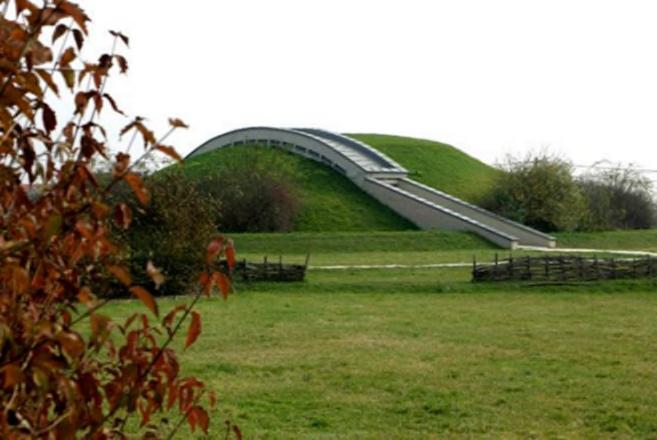
Figure 3: Százhalombatta, in Figure 3: Százhalombatta, in-situ reconstruction of tumulus No. 11 reconstruction of tumulus No. 11 Source: photograph by the Source: photograph by the author, 2012. author, 2012.
2.1.2. In the fabric of the city, new life emerges from the old. new life emerges from the old.
Rome offers us a totally different approach Rome offers us a totally different approach. The city preserves its ruins, builds around around them, and leaves them in the fabric of the city, so that the visitors cannot even avoid stumbling across them. so that the visitors cannot even avoid stumbling across them. The picture The picture on the next page shows the Trajan’s Forum with the ruins of Trajan’s Palace in the background, opposite to the Trajan’s Forum with the ruins of Trajan’s Palace in the background, opposite to the Capitolium Hill. The former Forum, impressi orum, impressive even in its ruins, is home to one of the busiest tourist even in its ruins, is home to one of the busiest tourist routes, where the visitors are guided with a minim guided with a minimalistic “exhibition infrastructure”, with tradition traditional descriptive signs assisting the interpretation. This kind of sightseeing in Rome interpretation. This kind of sightseeing in Rome could also be complemented be complemented by a historical journey through VR headsets headsets.
InterpNews
Figure 4: Rome, Trajan’s Forum with a description of the demonstration.
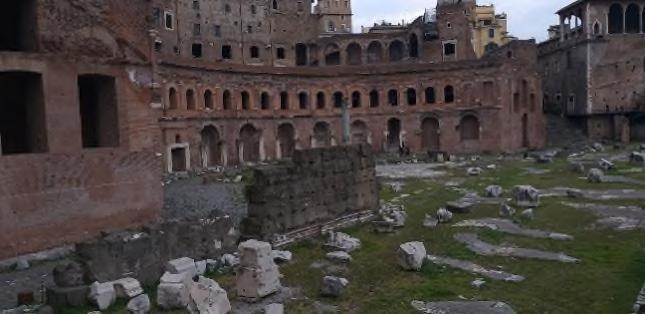
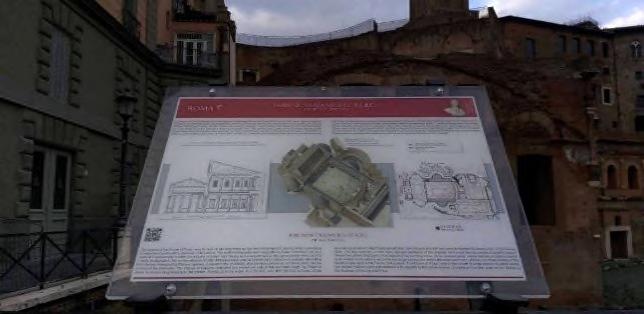
Source: photograph by the author, 2019.
2.1.3. Didactic demonstration in-situ, without protective building, roof or any other structure
The Colosseum1 that stands in the neighbourhood of the Forum, is a combination of an archaeological site and a visitable monument. Therefore, its excavations have lasted for decades. It is a splendid example for a didactic demonstration, where one can absorb the place`s milieu, and it is also a great example of how to organise and manage queuing well in a practical manner.
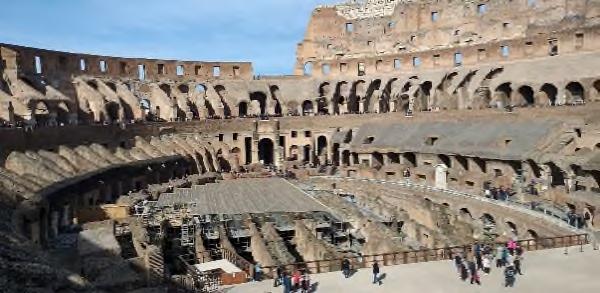
Figure 5: Rome, Colosseum, in-situ demonstration. Source: photograph by the author, 2019.
The Colosseum was built by Emperor Vespasian in 70 A.D., its length is 188 metres, its width is 156 metres, and it is 48.5 metres high. It facilitated around 50-75 thousand spectators and it had operated for almost 500 years. Still now, the annual number of visitors is approximately 2 million today. However, surprisingly, there is no fixed structure or extension built to the facility which would disturb the view of the Colosseum. The tourists are welcomed and served by mobile installations, counters and cordons which are of course supported by a considerable amount of human labour. In the inner parts of the building, which remained in relatively good condition, snuggles gently the permanent and didactic exhibition that explains the monument.
________________ 4 Emperor Vespasian had it built in 70 AD, its length is 188 metres, its width is 156 metres, and it is 48.5 metres high. The facility accommodating 50-75 thousand spectators operated for almost 500 years. The annual number of visitors today is approximately 2 million. Architect Giuseppe Valadier reinforced the outer ring wall in the early 19th century. (further information at https://www.rome-museum.com/colosseum-rome.php)
InterpNews
Figure 6: Rome, Colosseum, in-situ demonstration with didactic exhibition
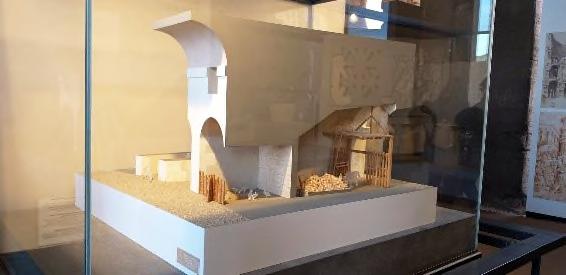
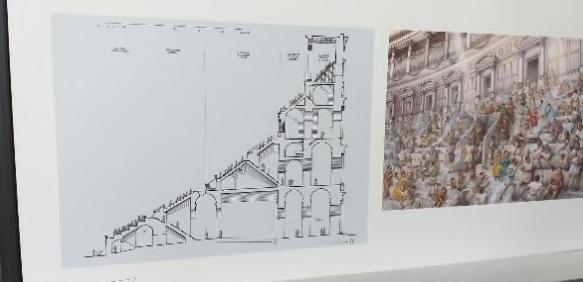
Source: photograph by the author, 2019.
2.1.4. In-situ demonstration with an artefact character
The development works of the early Christian cemetery in Pécs – Sopianae – into a tourist attraction included the excavation of the seven-foiled burial chamber (Cella Septichora) and the construction of the visitor centre, which was one of the largest investments of the last decades.
Figure 7: Development of the Early Christian cemetery of Pécs/Sopianae into a tourism attraction
Source: edited by the author (Mészáros 2012), photos: Károly Kismányoky
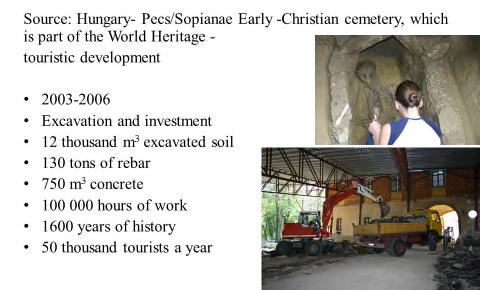
The figure above shows some data regarding the volume of work. What is worth mentioning here is the concept that created a structure, a special roof system that allowed the archaeological excavation to be carried out while it is also supported by the outer walls erected for the future visitor centre. Therefore, in this way, the presentation and the demonstration of the building became a reality in-situ, as a museum- artefact. The glass roof covers 200 m2 which elevates the 1,600 years old wall to the sunny ground level.
InterpNews
Figure 8: Cella Septichora, Pécs after the investment in 2004-2006
Source: László Körtvélyesi photographer
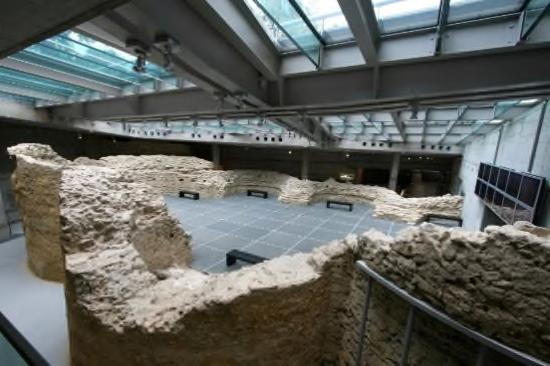
2.2.Monument as an “art”-ificial creation
This occurs when a part of the past is created by a brownfield investment A remarkable example of this is the fortress of Guedelon in France, which is a 13th century fortress that never existed, but could have been built anywhere. The construction work started in 1997 and the completion date is set for 2030. The work is carried out by 40 craftsmen who are experimenting with 13th century technology and methods. Interestingly, a few years ago the number of their visitors already reached 300,000 per annum.5
Figure 9: Fortress Guedelon, France, Burgundy, during construction
Source: https://www.guedelon.fr/fr/galerie_16.html
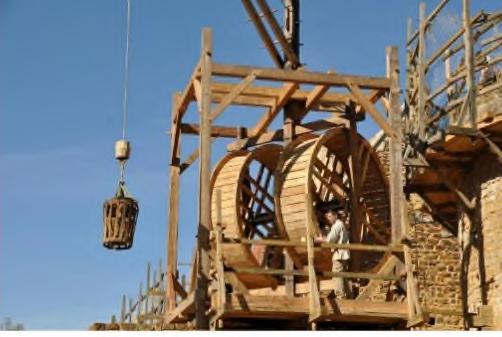

2.3.The monument
The analysis of the demonstration of monuments is way beyond the scope of this study, so only one example is mentioned here: an iconic building which is approached from the viewpoint of spatial experience that offers, and not from the traditional monument values. Figure 10: The double shell structure that creates a “tourist`s path” _______________ 5 International conference called “Création artistique et mécénat autour du Val-de-Loire á la Renaissance”, France: Tours – Bourgs, 5-10 July 2004
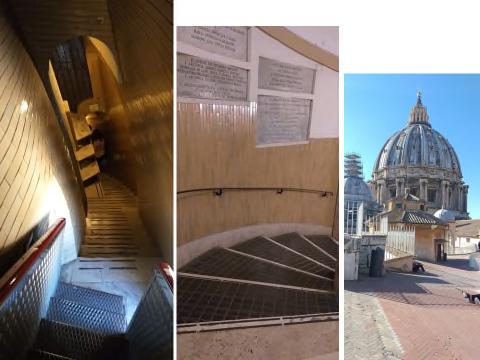
Source: photograph by the author, 2019
Reaching the unreachable…. offering an insight behind the backdrop. In the photo above where the dome can be seen, the visitors have to climb around 500 stairs within the structure of the double shell, in order to reach the panorama which is so well-known by everyone. Yes, this is the dome of St. Peter’s Basilica. It is actually the original architectural concept and implementation that allows visitors to have this extraordinary experience without any major intervention.
Figure 11: View from the dome of St. Peter’s Basilica
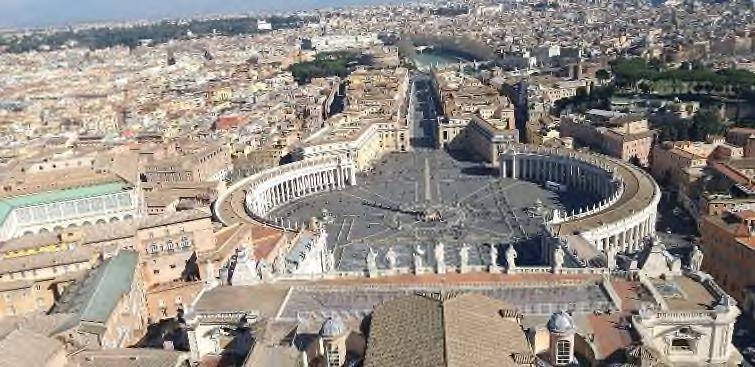
Source: photograph by the author, 2019.
3. Correlation of architecture and interpretation, the dominant role of architecture
The foundation of the demonstration of monuments is created by the renewal, conservation and restoration of the monument. The latter, evidently, goes beyond the preservation of the current condition of the monument by the means of interpreting the spectacle and by creating spatial experience. This is what tourism `occupies` by its tools, its interpretation, its tourist guides, with its animation, with the designation of visitor routes, and also by the functions of physical services. These elements determine each other as they jointly construct the interpretation and demonstration of the monument. This is outlined in the following figure.
InterpNews
Figure 12: The different layers of the demonstration of monuments.
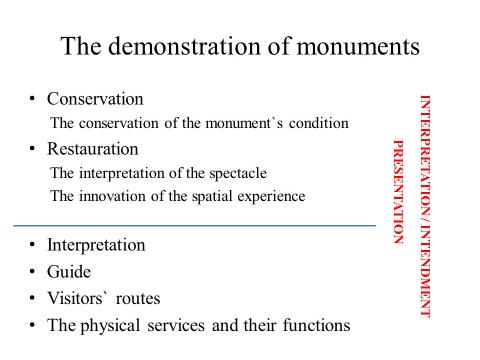
Source: edited by the author, 2018, 2018
The interpretation of the site and the provision for exhibitability should thus always be built on a stable and architectural concept, which is inseparable from that. There are some well-known factors from marketing: the in-situ and also the locally effective human and physical apparatus. However, there are a lot more tools which could be named that could further attract and help visitors to reminisce, independently from the site (in space and time). The essence of demonstration also contains an element of linking content and propaganda: the site’s image, its logo, symbol and design. The question of course is, what are the fundamental and conceptual issues that make an exhibition good? I hope you forgive me when I make an arbitrary statement, chosen from the aspects of architecture and interpretation, that there are “only” four factors that must be met.
These are the expectations that an exhibition should be like: CREDIBLE, INTERESTING, UNDERSTANDABLE AND PALPABLE (Mészáros 2016).
3.1.What credibility means
For a monument architect the criteria for credibility are as follows: Form and shape (especially stylistic forms that are emerging from the shapes) material and condition setting spirit (Mezős) The fundamental question is, what is considered as value? In what era, what function and in what sort of condition was the building the most complete? This was also a decisive issue when the restoration of Athens’ Parthenon was undertaken. Pericles had it built as a treasury in 500 BC, but it actually operated as a temple to Pallas Athena for approximately a thousand years. Then, from the early 12th century it was converted into a Church for Mary the Virgin by the invading crusaders.
After that, in the 15th century, the Turks converted it into a mosque, which was also used for gunpowder storage, until it was exploded by a grenade thrown by the Venetian Army in 1687. The question for decades was: which period of the monument should be taken into consideration for the restoration? Finally, they decided to preserve the building`s condition from the era of Pericles, while all the other objects, findings and artefacts from the other eras were transported to museums (Mezős 2001).
3.2.What it means when an interpretation, an exhibition is interesting, that:
it is visually mesmerising it tells a story it inspires visitors to participate, act and think it is capable of addressing several types of visitors at the same time (Tilden, Beck–Cable, Veverka,
Puczkó - Rátz)
The example is arbitrary again. However, what I would like to highlight are the diverse ways that can make a monument interesting. Villa Balbianello1 in Lello, was built in 1787, based on a Franciscan cloister, which stands on the shore of Lake Como. Its last owner, Guido Monzino from Milan, who was the organiser of the first Italian expedition to Mount Everest, moved into the villa in 1974. After his death, it was inherited by the Italian Organisation for Heritage Protection. Still, what made it interesting for my children is not the value of the monument, neither its fabulous gardens nor Monzino the mountaineer and explorer. What they appreciated in the villa was that it served as a location for the ‘Star Wars’ films. Unsurprisingly, they could tell with precision from the film that: `this was the hiding place for Queen Amidala, and here is where Anakin came for her rescue…. `
Figure 13: Villa Balbianello
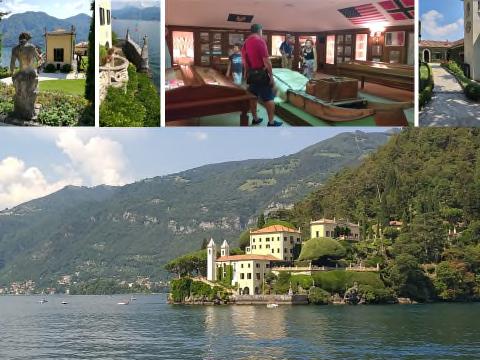
Source: photograph by the author, 2019.
InterpNews
3.3.What it means for a demonstration to be understandable
• that it is understandable in content • it is understandable in context (in time, space, story, both in the domestic and the European cultural circles) • it is value-based demonstration and not “coulisse” • it is understandable from lay persons to experts, from toddlers to pensioners The Roman city and fortress from Lower Austria, Petronell–Carnuntum7 is an excellent example for a didactic and concise restoration, which also offers spatial experience. Moreover, it is also a great example for presenting and reviving history with its fables.
3.3.And finally let us see what it means that a demonstration is palpable
Another example from Austria, Loisium1, is the house of Riesling wine, not too far away from Vienna. It is also a tourist centre, a hotel and an interactive visitor centre, where a system of cellars can be visited which has monument value. The `cube` came into being in 2003, according to the plans of the New York architect, Steven Holl. The base for the concept was the interpretation of vine and the vineyard by the `language` of architecture, both regarding its shape (smoothly integrated into the slope) and the use of materials. The tour in the 900-year-old cellar starts from below the modern `cube`, which is covered with 680 aluminium plates. At the start of the tour we can experience what it might be like to be a grape in the press.
Figure 14: Losium, the house of Riesling, visitor centre, in the press
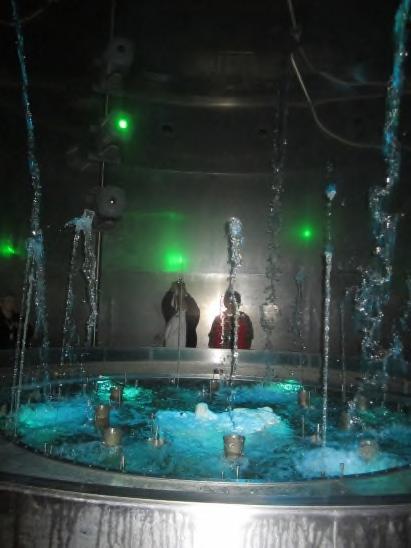
After the start with its super modern architecture which offers an existential experience, then we come to the aged objects of the decrepit cellars that seem to come alive as they tell their story, or as they simply offer a backdrop to our tour, as well as providing a tool for demonstrating modern devices. ______________
6 https://www.fondoambiente.it/luoghi/villa-del-balbianello?utm_source=organic&utm_medium=gmb&utm_campaign=balbianello 7 https://www.carnuntum.at
Conclusions
According to a market leading American company which organise historical exhibitions (Taylors Studios, Brusatte 2019), the average time spent at an exhibition is around 18 minutes, while the exhibition is planned and created for years by the experts. The question is how we can make visitors: - Stay longer! - Think deeper! - Learn more!
Stephen Bitgood, a professor from Jacksonville State University, after several years of research and evaluation, worked out a model called “attention-value model.” This model distinguishes between deep and focused attention (mental attention) and everyday attention (a short glance at the table for a few seconds). Attention as a mental focus and as a perceived value are the foundations of the visitors’ experience. Attention involves the continuity of intellectual and emotional processes. The value becomes the engine to the visitor`s commitment, which is found in the effectiveness and in the cost of the interpretation materials. According to Bitgood, this is what determines whether we choose or not choose something.
Partially, these thoughts motivated the collection of some of the case studies mentioned above. In regard to historical buildings, it is essential to complement the theoretical model of Stephen Bitgood, with what is behind the perceived value at monument restorations. 1. Interpretation is the foundation of demonstration. 2. Interpretation is not the privilege of any profession. 3. Through the demonstration that builds on the interpretation we reach to the values that have been perceived by the visitor.
interpretation demonstration perceived value
Therefore, this is why the author of this article opted for a kind of demonstration of monument which is value-based, considerate to the understanding of consumers and professionally collaborative.
References
1. 2.
3. Beck, L. – Cable, T. (1998): Interpretation for the 21st Century. 242 pp. Bitgood, S. (2019): Engaging visitor attention: The role of interest, workload, and value, Stephen Bitgood, Jackonville State University. In: InterpNews 2019. jan/febr (Edited by: John Veverka), pp 1012. Brusatte, C. (2019): Verifying Success: Helping Small Interpretive Sites Evaluate their Exhibits, Chris Brusatte, Interpretive Planner at Taylor Studios, Inc. In: InterpNews 2019. jan/febr (Edited by: John Veverka), pp 10-12.
InterpNews
4. Dumas, A. – Hauer, s. – Ripp, M. – Lukat, A. (2014): Learning and Having Fun: Visitor Centers
Imparting Knowledge Using a New Format --Experience from the World Heritage Visitor Center in
Regensburg 5. Kotler, P. (1992, 2012): Marketing management. Műszaki Könyvkiadó, Budapest. 6. Mezős T. (2001): Műemlékvédelem 5.0 változat, Jegyzet és ábraanyag az Építészmérnöki Kar IV. éves nappali tagozatos hallgatói számára, Budapest, Budapesti Műszaki Egyetem. 7. Mészáros B. (2018): Kezelési terv, mint lehetőség szakmák együttműködésére. Barát vagy versenytárs?
Örökségi szakma és turizmus kapcsolódása In: Múzeumi örökség-közösség. Múzeumandragógiai tanulmányok, esszék magyar és nemzetközi nézőpontból. Museum heritage – community. Essays and studies on museum andragogy from a hungarian and international perspective (Kriston-Vízi József, 2018
Budapest – Kecskemét) ISSN 2061-7615, ISBN 978-615-80043-5-0, pp: 159-164 8. Mészáros B. (2016): Az épített örökség értékre emelése és népszerűsítése, az örökség menedzsment rendszere. PhD értekezés, Pécs, PTE-FDI, 131 pp. 9. Mészáros B. (2012): Esettanulmány – Turisztikai vonzerőfejlesztés EU támogatással, avagy hogyan lesz attrakció egy régészeti lelőhelyből, szerk.: MICHALKÓ G.: Turizmológia, Akadémiai Kiadó Budapest 10. Puczkó L. – Rátz T. (2003): Turizmus történelmi városokban: Tervezés és menedzsment. Turisztikai
Oktató és Kutató Kkt., Budapest, 111 p. 11. Puczkó L. – Rátz T. (2000): Az attrakciótól az élményig: A látogatómenedzsment módszerei. Akadémiai
Kiadó, Budapest, 341 p. 12. Riegl, A. (1903); Der Moderne Denkmalskultus. Sein Wesen und seine Entstehung In: A. Riegl,
Gesammelte Aufsätze. Hrsg. von K.M. Swoboda, Augsburg/Wien, (1929). p. 144-191. és Dvorak, M.;
Katechismus der Denkmalpflege. Wien, (1918). 13. Stephen, L. - Smith, J. (1994): The tourism product, University of Waterloo, Canada, Annals of Tourism
Research, Vol. 21, No. 3, pp. 582-595. 14. Tilden, F. 1957, (1967): Interpreting Our Heritage, Univ of North Carolina Press, 120 pp. 15. Saját fotóadatbázis és saját esettanulmány gyűjtés
Bernadett Mészáros, Dr. Economist, Assistant Professor University of Pécs Faculty of Engineering and Information Technology Institut Smart Technolgie m.bernadett@mik.pte.hu
